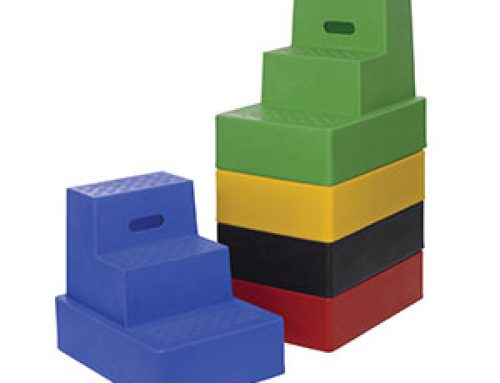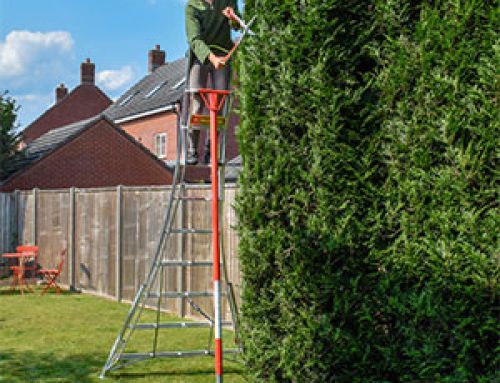For the serious DIYer and anyone who lives in a building that requires ongoing maintenance, this is a question you may have asked yourself several times. For clearing guttering, repainting exterior walls and touching up old window frames a scaffold tower is a much better alternative to a ladder, as you can stay working at height for much longer than if you were standing on a ladder rung. Once the tools and equipment are on the scaffold, there is no need to keep going up and down the ladder for bits and pieces and you can actually get jobs done much quicker. Because you also have a bigger working area than you get while using a ladder you are able to work on a wider area at one time without having to move a ladder. Of course, you will need to move a scaffold tower often when you are working on something such as guttering, but with less frequency than if you were using a ladder. Scaffold towers are also safer to use than ladders and harder to steal. If you were to leave a ladder outdoors overnight it could be easily stolen. However, the noise and time associated with stealing a scaffold tower would alert you to the theft: they can't just be wheeled away unnoticed! They also allow you to work at very tall heights without the same danger factor of a ladder of the same length. Most scaffold tower systems can be extended with the purchase of extra components, which means it is simple to add extra height to your scaffold tower should you need it. If you are considering using a scaffold tower for home use, you would be well advised to invest in one. To hire a scaffold tower of 2.2 metres will set you back around £120 for a week. You may need it for more than two weeks to get the job done, depending on the weather and the scale of work. When you consider the petrol costs of collecting and returning the equipment you could be looking at around £140 in total. Midland Ladders offer a DIY scaffold tower of 2.4 metres for £227, including VAT and delivery. Although this is nearly £90 more expensive than hiring one for a week, if you have the equipment for longer than a week you will be paying more, and if you have a lot of work to do it may well take longer than a week. With your own scaffold tower you can work whenever you want without having to pay any hire fees. The working height of this unit is 4.4 metres, which is enough to reach the second floor windows on a two-storey home. It can also be set up on steps, which makes it very flexible in outdoor spaces; decking and other paved areas with steps are no problem for this scaffold tower.
You can get up to 5.5 metres of working height for £520 including VAT and delivery, and it comes with two platforms allowing you to work at different heights. This scaffold tower is great for jobs that involve a large area, such as repainting or restoring brickwork. To hire a similar unit would cost around £200 per week including VAT. This is a significantly bigger price difference than between the shorter towers, but if you have the need for that much height there is a good chance that the scaffold tower will get a lot of use. Typically, a scaffold tower will pay for itself within 2 to 2 and half years, so while there may be a bigger initial outlay involved in buying one, the extra flexibility in height and frequency of use is worth the investment. If the scaffold tower is to be used professionally it needs to be certified for that type of purpose and the sturdier models designed for more regular use cost more to buy. Although is costs roughly a quarter of the amount to hire a scaffold tower versus buying one, it is a very useful piece of equipment, and the chances are that if you get to use one you will probably want one of your own. If you think a scaffold tower might be worth the investment then give us a call or check out our selection of Scaffolding Towers Online.






Leave A Comment
You must be logged in to post a comment.